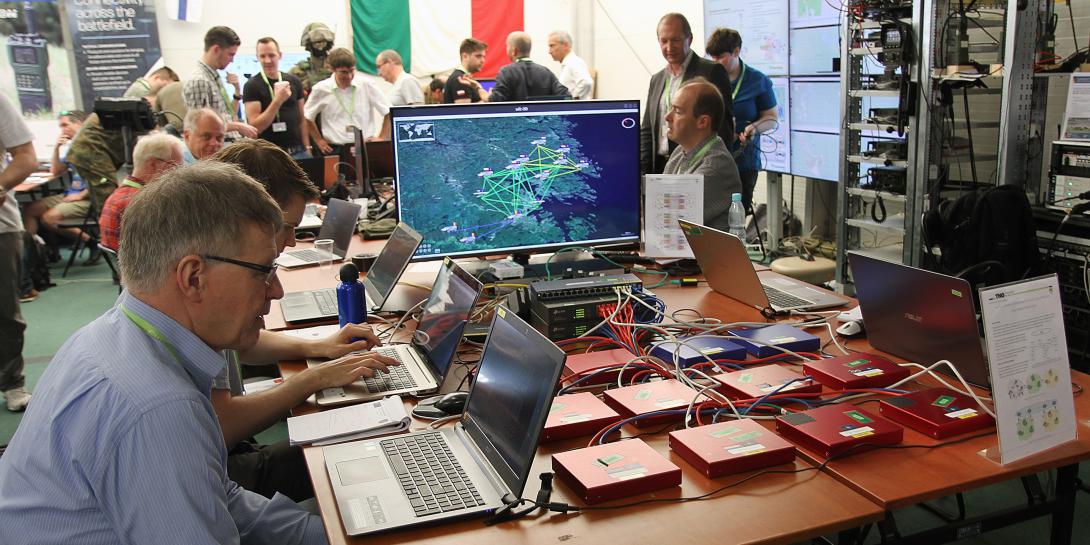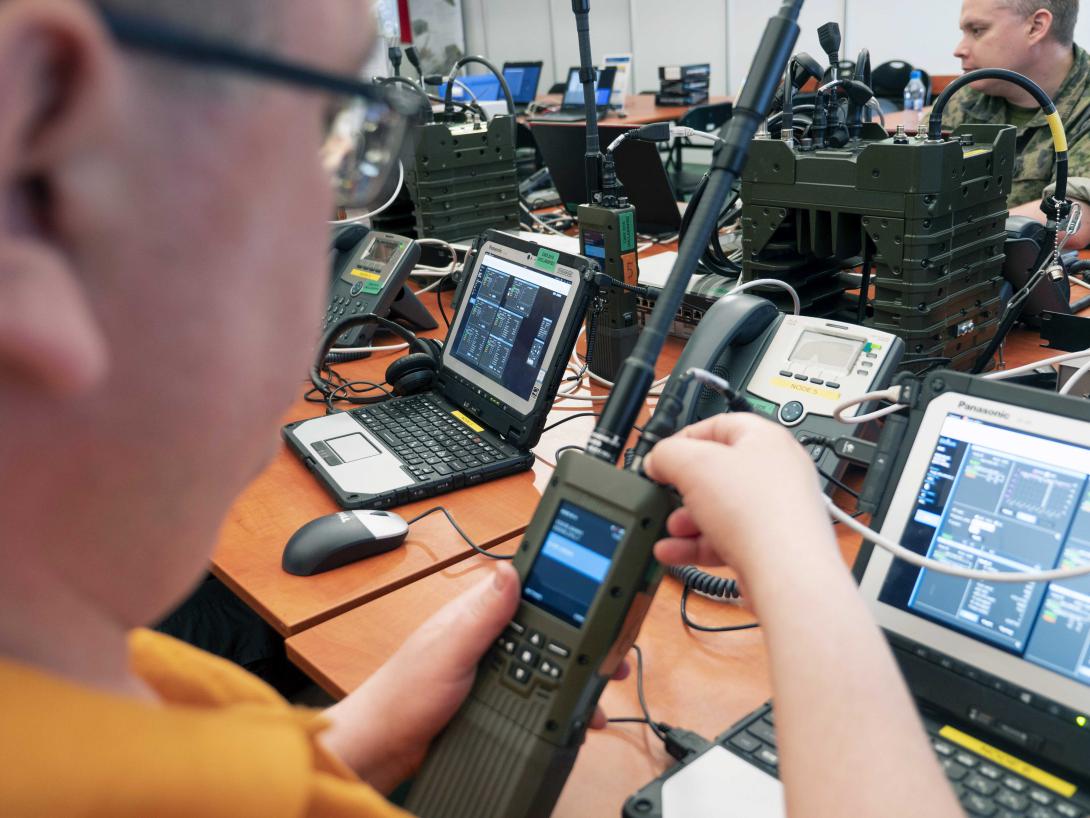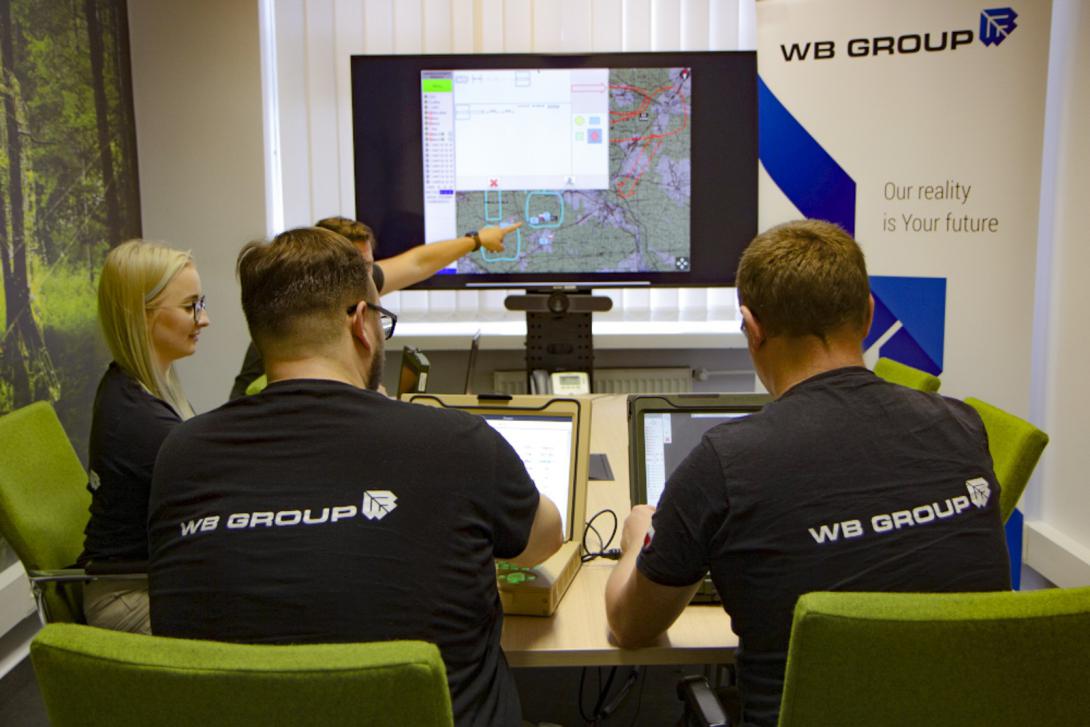Mission Networks Require Service Management
As a lead nation, Germany has been successfully designing and implementing the Federated Service Management and Control capability as part of the development of the NATO Federated Mission Network. Throughout the joint approach, NATO member states, partner nations Austria and Switzerland, the NATO Communications and Information Agency, the Allied Command Transformation and Supreme Headquarters Allied Powers Europe, which are both NATO strategic commands, as well as Allied Command Operations have been continuously involved in its design and incremental implementation.
The challenges of undertaking a multinational mission with different operational management systems without an integrated approach vexed operations daily in Afghanistan for the German Federal Armed Forces and other partner nations during several joint operations. The impact of how a patchwork of information technology components gathering at short notice can negatively affect the everyday mission execution reality of troops in-theater quickly became clear.
In 2019, as part of Germany’s contribution to the Coalition Warrior Interoperability eXploration, eXperimentation, eXamination, eXercise (CWIX), the development results of the Federated Service Management and Control (FSMC) capability were demonstrated successfully in an international context. Military, industry and research representatives assemble annually to test a wide range of technologies and processes for their practical applicability and interoperability in an international network.
The CWIX event is hosted by NATO’s Joint Force Training Centre (JFTC) in Bydgoszcz, Poland. During this interoperability, testing and risk reduction event, participants gain important knowledge and are inspired to pursue continued capability development and integration into ongoing engagements and projects. In addition to recognizing technologies’ optimization potential, the focus is on qualifying and further development of current skills and solutions. The event is key to establishing federal interoperability and making it possible to identify and address the technical risks and opportunities of international cooperation at an early stage.
For several years, the testing of various NATO Federated Mission Networking (FMN) capabilities in different stages of development has been paramount. To plan, prepare, build and use mission networks to support federated operations, NATO developed the FMN as a conceptional framework that integrated people, technologies and processes. Within this framework, capabilities were and are being defined and, in sequential cycles called spirals, are further developed using an agile iterative conception and implementation to a maturity level and functional scope that is tested at CWIX.
The FSMC system provides the relevant information and data needed to perform information technology service management (ITSM) consistently, accurately and reliably down to the tactical level. Ideally, a standardized management and control capability works silently inside the FMN platform while enabling real-time data exchange across systems and security domains.
With equal weight and attention, the FSMC takes into account the requirements for the network’s availability in operation, comprehensive information security, the statuses of mission partners and interoperability. In addition to standard computer and information security, the functionalities of an information-centric functional information technology security architecture provide the essential capability to exchange and use the information of different classifications across security domains. A closely coordinated and cooperative collaboration between the FMN federated service management and control capabilities, data-centric security and the German functional information technology security architecture as key enabling factors, are vital for the network to continue to develop.
If an FSMC system is functionally aligned to demand and rigorously implemented—including training, account processes and information exchange relationships through technological integration—it is an essential prerequisite for the deployment and management of communications and data. As a result, set up can be quick. The network is always scalable, can be multinational and in the joint networked operating military task force to carry out a mission.
Participating partners must implement and test suitable FSMC-compliant interfaces concerning the architecture of their mission networks and their information databases. They also must test and ready them for use in federated missions, including all peripherals such as a suitable adapter to a standardized power outlet.
For example, within the FMN spiral specifications, all necessary documentation and technical architecture for the allocation of the right adapter, which has been independently procured or implemented, are well documented granularly down to the bit level. Germany has the lead in the responsible committees such as the FMN Inter-Working Group CIS Support Syndicate and fulfills its role in a professional and coordinating manner.
The requirements for the FSMC architecture also are demanding. For instance, in a multinational environment, secure and reliable networking, an aligned information and process model and the management of product- and technology-agnostic interfaces and the adapters for their use are needed, including provision. Neither models from the commercial nor the military environments could be identified that adequately met all the requirements for flexibility and interoperability in a multinational military environment.
In addition to technical complexity, the specifics of a multinational, agile approach require special attention. Delays in distributed developments within the FSMC and other FMN capability modules can jeopardize the overall success.
A fundamental cultural change that underlies the federated FSMC also must be mastered. Although the establishment of a networked, centralized and decentralized manageable FSMC on the basis of a uniform architecture and open standards enables events, incidents and service requests from different information and security domains, applications and manufacturers must be brought together from the beginning. This approach allows for a holistic solution to be achieved through a consolidated view and collaboration. However, to harness this digitization potential for management and operational capability, relevant deployment principles and information technology operating processes first must be reviewed.
To realize digitization potential, the interests of each nation in terms of necessary information and operational security must be safeguarded. In the common interest of NATO, the comprehensive usability of information and processes must be facilitated. Information exchange processes must evolve from a need-to-know to a need-to-share approach.
A multinational standardization of complex procedures, processes and technical interfaces poses both opportunities and risks. The complexity and absolute focus on reliable usability demands a flexible, agile, iterative approach with test phases, iterations and even reiterations. However, traditionally, large organizations do not employ this approach to projects. Rather, their plans, which can include great detail, feature static phases and avoid reiteration activities.
But for the FMN, participants’ will and the necessity to be more flexible—specifically because of operations in Afghanistan—were strong enough to make these changes. Prior to establishing the FMN, the individual elements of operations management and coordinated and information exchange were enabled by immense technical and organizational effort.
In Germany, the standardization of existing command and control information systems and their service-oriented focus occurred during the mission in Afghanistan with the Harmonization of Command and Control Information Systems (HaFIS) project. Consequently, HaFIS became the nucleus that was qualitatively and quantitatively extended to the German Mission Network (GMN), which strictly focuses on interoperability in multinational missions.
The GMN posed a practical solution, and Germany took the lead in developing the capability of the FSMC for multinational mission networks. With the support of the strategic NATO Allied Command Transformation, an expert working group within the FMN committee structure was established. Germany led various informational events, which then were put under Germany’s continuous leadership.
Since 2016, the FSMC development results have not only been demonstrated successfully in international context but also important knowledge and impulses for further development are being gained and integrated into ongoing engagements and projects. At CWIX 2019, the FSMC solution capability was repeatedly demonstrated as valid and highly innovative. In addition to the exercise and a continuously increasing number of FSMC processes, the goal of demonstrating interoperability progress every year during the CWIX has been fulfilled, indicating that processes must undergo an acceptance test procedure through independent multinational CWIX analysts.
During the event, the advantages of openness for the integration of different development stages that Germany chose were tested practically and vividly. Finland lined up at CWIX to configure a completely new national, open-source-based SMC system, and it brought its own technology for integration. This challenge demonstrated the event’s mission to compose new mission information technology from a partner under time constraints.
In fact, at the development stage for the SMC, this challenge had never been tested. “We first thought, ‘We respect how brave [Finland was to bring this system to the event],’” one of the CWIX 2019 participants stated. But possible difficulties did not arise. Within three weeks, the implementation had been completed up to and including the current level of maturity, Spiral 4.
Each year, another nation dares the same action. But because of the FSMC standards, which were developed under German leadership, national ITSM tools can be built and further developed from scratch.
During 2019 and 2020, Germany took the lead and, with the cooperation of many nations, integrated a federated service asset and configuration management (SACM) capability that features the Federated Configuration Item Store as well as a tactical chat feature and functionality. Federated SACM is a major milestone toward generating a common operational picture and situational awareness for information technology security and cyber defense. Tactical uplinks using widely available tools like JChat, which currently has more than 56,000 users, are useful for both NATO and the FMN.
Because of the pandemic, CWIX 2020 took place from remote locations in the virtual world for the first time. Geographically, participants from 22 nations took part in locations worldwide.
SIGNAL Magazine’s April 2021 issue will feature an article including details about the benefits of standardization, how it was achieved and the way ahead.
Jörg Eschweiler, heads cybersecurity and intelligence with Atos’ Public Sector Defense and Intelligence, in Germany. He is a veteran in Federated Mission Networking capability development and Think-Tank for Information Decision and Execution (TIDE Sprint) track lead.








Comments